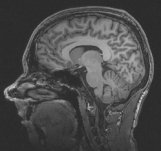Course title: Magnetic Resonance Imaging Basics
 Content and format: The course provides a basis for understanding MRI measurements, pitfalls and literature. The course is not enabling in itself, but provides a starting point for further studies. It covers introductory MRI acquisition in a series of ~7 weekly interactive lectures starting November 6th, 2018. These include MR basics, acquisition methods and parameters with a focus on understanding. Detailed topics are described below. Active participation is required.
Content and format: The course provides a basis for understanding MRI measurements, pitfalls and literature. The course is not enabling in itself, but provides a starting point for further studies. It covers introductory MRI acquisition in a series of ~7 weekly interactive lectures starting November 6th, 2018. These include MR basics, acquisition methods and parameters with a focus on understanding. Detailed topics are described below. Active participation is required.
The course starts at a level requiring little or no MR experience, and a technical background is not required. The target audience is employees and students at the MR department but the course is open for external participants (a fee may apply -- see below).
The course gives a good basis for attending the more technical and independent spring course Medical Magnetic Resonance Imaging offered as part of the Biomedical Engineering program at the Technical University of Denmark, which is also available for non-DTU-students (offered under "Open University". Note that some math & programming skills are required).
Dates, time, place: The course starts Tuesday afternoon 13:30-16, November 6th, 2018. There is no teaching November 27th, and from December 4th, the course is held from 13-16 to compensate. Unless changes are agreed on, the course continues weekly until December 18th (see tentative lecture plan below). The venue is room 25 in section 156 of Hvidovre Hospital (also available via "Akutindgang B" entrance by "kapel" - see map).
Registration: The course is open, but subject to a fee of DKK 5000 unless you are sufficiently connected to the DRCMR. Ask Karam Sidaros if in doubt (), and sign up to Lars () including info about your affiliation, and payment details, if relevant ("EAN number", address and reference). You will then be added to the course mailing list.
Literature and software: The course is initially based on notes http://eprints.drcmr.dk/37/ (also available in Danish). Other course notes, slides and relevant articles are provided during the course.
![]() Credit: The course has a workload corresponding to 1.5 ECTS points. You do not, however, automatically get credit for the course in any education. You can get a certificate and apply for credit at your school, but be aware that no general evaluation is planned, which may be required for a credit-bearing course. An informal exam focused on your particular interests can be arranged on an individual basis upon request. This is required for the organizer to recommend 2 ECTS in total (up to 2.5 depending on assignments/exams. The DRCMR safety courses can also count).
Credit: The course has a workload corresponding to 1.5 ECTS points. You do not, however, automatically get credit for the course in any education. You can get a certificate and apply for credit at your school, but be aware that no general evaluation is planned, which may be required for a credit-bearing course. An informal exam focused on your particular interests can be arranged on an individual basis upon request. This is required for the organizer to recommend 2 ECTS in total (up to 2.5 depending on assignments/exams. The DRCMR safety courses can also count).
Language: The course language is English. Participants are welcome to respond and ask questions in Danish, if preferred.
Organizer and lecturer: Lars G. Hanson (senior scientist at DRCMR, and associate professor at Center for MR, DTU).
Preliminary outline divided on weeks (more precise updates are sent to participants):
Tuesday November 6th, part 1:
- Sections "Magnetic Resonance" until "Sequences" in MR notes are discussed during the coming few weeks (the English and Danish versions are similar). Protons, spin, net magnetization, precession, radio waves, resonance, relaxation, rotating and stationary frames of reference, T1 and T2.
Tuesday November 13th, part 2:
- Relaxation time weighting. Sequence diagrams, contrast
- Sequence building blocks: Inversion, saturation, lipid/water suppression.
Tuesday November 20th, part 3:
- Dephasing, refocusing, T2*, spin echoes
- Magnetic interaction with tissue
- Fast low angle shot (FLASH)
- Shimming
- Sources of contrast
MR notes from "Imaging" and beyond are covered during the coming weeks.
Tuesday November 27th, no lecture.
Tuesday December 4th, part 4:
- Low tip angle excitation (FLASH)
- Gradients, slice selection
- Phase, phase rolls
- Imaging and k-space. Echo time revisited.
Tuesday December 11th, part 5:
- k-space trajectories, artifacts (distortions, ghosting and aliasing), noise and image quality quantification.
- Sequence and weighting follow-up, BOLD contrast.
Tuesday December 18th, part 6:
- Diffusion weighting and fMRI.
The lecture plan is adjusted with respect to both subjects and timing during the course, and to some degree based on participant wishes. Updates are distributed to registered participants (see above).



